June 24th Scots Book of Days
1 BC The Birth of John the Baptist celebrated as 6 months before Christmas. Actual date about October 6, six months before the birth of Jesus on April 6. John was 6 months older than his cousin, Jesus ben Joseph, (later styled the Messiah and then the Christ). Feast of John the Baptist.
1268 Gilbert de Clare, 6th Earl of Hertford, 7th Earl of Gloucester (1243-1295) took the Cross at Northampton in repentance and contrition for his past misdeeds. In 1291 Clare attended the king at Norham when he settled the succession to the Scottish throne, and he was at Berwick on 7 November 1292, when Robert (V) de Brus resigned his claim to the Scottish throne to his son and his heirs.
Mosaic associated with Gilbert de Clare.
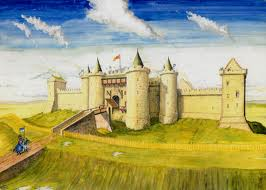 1313 Stirling castle, the only remaining fortress in Scotland possessed by the English, and defended by Sir Philip de Mowbray, governor. Edward Bruce, brother of King Robert, received Mowbray’s parley that the Stirling Garrison, lacking provisions, if not relieved by the feast of St John the Baptist in the following year, would surrender the castle. The truce was honored by King Robert. Edward, King of England, resolved to prepare an invasion to relieve Stirling. And gigantic scale began.
1313 Stirling castle, the only remaining fortress in Scotland possessed by the English, and defended by Sir Philip de Mowbray, governor. Edward Bruce, brother of King Robert, received Mowbray’s parley that the Stirling Garrison, lacking provisions, if not relieved by the feast of St John the Baptist in the following year, would surrender the castle. The truce was honored by King Robert. Edward, King of England, resolved to prepare an invasion to relieve Stirling. And gigantic scale began.
douglashistory.co.uk – imagined Douglas entering Stirling Castle (1452). Stirling Castle is first mentioned around 1110, in Alexander I’s reign; he died here in 1124. Throughout the Wars of Independence with England (1296–1356), Stirling was hotly fought over, changing hands frequently. Bloody battles were fought in its shadow – Wallace’s great victory over Edward I at Stirling Bridge (1297), and Bruce’s decisive encounter with Edward II at Bannockburn (1314). Bruce then destroyed the castle to prevent it falling into enemy hands again. Rebuilt in James IV’s reign (1488–1513), Scotland was receptive to Classical ideas from Renaissance Italy. James spent much making the castle fit for a European monarch, to impress his queen, Margaret Tudor, daughter of Henry VII of England. His son, James V, was determined to impress his bride, Queen Marie de Guise. Their daughter, Mary Queen of Scots, was crowned at Stirling in 1543, and Mary’s own son, the future James VI, was baptised here in 1566. The celebrations culminated in a fireworks display on the Esplanade, the first seen in Scotland. James VI hosted a great three-day celebration here in 1594 to mark his own son’s baptism. In 1452, the head of the increasingly powerful Douglas family, William, 8th Earl of Douglas, was invited under the protection of the king James II to Stirling Castle, who stabbed the 8th Earl, and dissolved the Earldom.
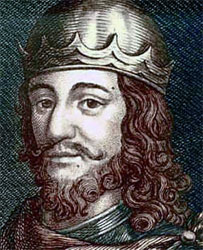 1314 Battle of Bannockburn. A year later, the castle of Stirling agreed to be surrendered if not relieved by the feast of Saint John the Baptist. Abbot of Inchaffray walked through their ranks barefooted, and exhorted them to fight for their freedom.
1314 Battle of Bannockburn. A year later, the castle of Stirling agreed to be surrendered if not relieved by the feast of Saint John the Baptist. Abbot of Inchaffray walked through their ranks barefooted, and exhorted them to fight for their freedom.
Robert de Bruce, King of the Scots from 1306 to 1329.
- Brus or Bruce 1050 2Stewart2Kennedy 2Montgomery2Blair 2Cochrane2Miller 2Simmons2Choate zoe ToaG
The Scots kneeled down as the King Robert passed by in review, and prayed to Heaven for victory. ![]() King Edward 2nd ,
King Edward 2nd , 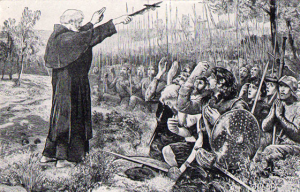 who saw this, called out, “They kneel down–they are asking forgiveness.” “Yes,” said a celebrated English baron, called Ingelram de Umphraville, “but they ask it from God, not from us — these men will conquer, or die upon the (TG10-153) field.” Tytler’s History of Scotland and Britannica.
who saw this, called out, “They kneel down–they are asking forgiveness.” “Yes,” said a celebrated English baron, called Ingelram de Umphraville, “but they ask it from God, not from us — these men will conquer, or die upon the (TG10-153) field.” Tytler’s History of Scotland and Britannica.
The Abbot of Inchaffray blesses the Scots soldiers before the Battle of Bannockburn.
Double envelopment by the Scots’ servants, panics the English, who fled. (TG10-155)Douglas and Sir Laurence Abernethy chase King Edward 2nd as far as Dunbar, whose governor, Patrick Earl of March provides a fishing skiff to Edward 2nd to escape. TG10-156 Significant Scottish victory in the Wars of Scottish Independence. The decisive battle in the First War of Scottish Independence. Clan Jardine support King Robert the Bruce.
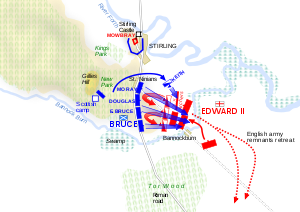 battle of Bannockburn-second day.
battle of Bannockburn-second day.
Robert the Bruce who oversaw this Scottish 500-horse light cavalry under Robert Keith dispersed English archers.
The Clan Boyd Family came into possession of Dean Castle in 1316, when Robert de Boyd was rewarded the lands of Kilmarnock and West Kilbride in Ayrshire, Scotland (confiscated from Baliols) by King Robert I for his service and valour at the Battle of Bannockburn, “Lay on! Lay on! Lay on! They fail!”
- Boyd Lord Kilmarnock Ayr 1020 2Douglas2Ruthven 2Kinchin2Jared2Simmons 2CHoate zoe ToaG
This cry was heard by Bruce’s camp followers, who promptly gathered weapons and banners and charged forward. To the English army, close to exhaustion, this appeared to be a fresh reserve and they lost all hope. The English forces north of the Bannockburn broke into flight. Some tried to cross the River Forth where most drowned in the attempt.
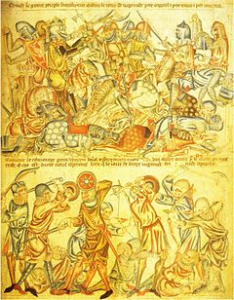 Holkham Bible (1327-35) gives a good idea of the appearance of the armies at Bannockburn.
Holkham Bible (1327-35) gives a good idea of the appearance of the armies at Bannockburn.
Sir Robert Keith by a charter of King Robert the Bruce, and appears to have been held as annexed to the land by the tenure of grand serjeanty. Sir Robert Keith commanded Scottish light cavalry at the Battle of Bannockburn.
Keith of Dunnottarin Kincardine 1109 2Stewart2Campbell 2Montgomery2Blair 2Cochrane2Miller 2Simmons2Choate zoe Blair5
‘Good Sir James Douglas’ commanded the centre division of the Scottish Van. Before the battle Douglas perceived Randolph hard pressed by English cavalry trying to get to Stirling, asked permission of the Bruce to succour, but was refused. ‘My heart will not suffer me to stand by and see Randolph perish, and therefore, with your leave, I must go and aid him.’ The king consented, and Douglas rode to assist, but on approaching the combat, perceived the English were in disorder, halted his men saying, 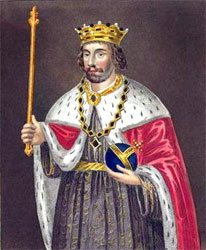 ‘Randolph has gained the day, let us not diminish his glory by sharing it.’ Anderson Scots History v. 2 / p. 51. Edward II, King of England, vanquished at the Battle of Bannockburn.
‘Randolph has gained the day, let us not diminish his glory by sharing it.’ Anderson Scots History v. 2 / p. 51. Edward II, King of England, vanquished at the Battle of Bannockburn.
King Edward II of England refused entry to Stirling Castle after
the Battle of Bannockburn by Sir Philip de 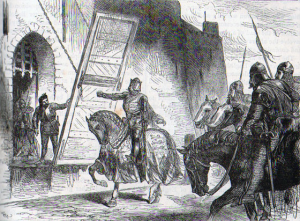 Mowbray, the governor, who urged the King not to take refuge in the castle as he would inevitably be taken prisoner when the castle was forced to surrender to the Scots.
Mowbray, the governor, who urged the King not to take refuge in the castle as he would inevitably be taken prisoner when the castle was forced to surrender to the Scots.
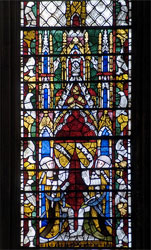 The memorial to Sir Edmund de Mauley in York Minster: Sir Edmund died at the Battle of Bannockburn fighting in the English army.
The memorial to Sir Edmund de Mauley in York Minster: Sir Edmund died at the Battle of Bannockburn fighting in the English army.
1488 James IV Stewart, coronation. Wikipedia
1525 On 24 June 1525 Robert Boyd 4th Lord Boyd had a discharge from Archibald, Earl of Angus, for the “fermes” of Kilmarnock pertaining to his spouse, Margaret Douglas (Nee Tudor, Stewart) the Queen Mother, and another from Margaret Stewart (Nee Douglas, Stewart, Tudor) herself, dated 27 November 1529, having been appointed a Squire of the Household on 26 June 1525. Among the Boyd papers is a bond of mutual assistance dated 26 May 1529 between this Robert Boyd and Margaret the Queen Mother and Henry, Lord Methven, her third husband.
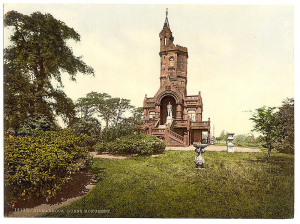 On 13 June 1532 Robert Boyd’s son, also called Robert, was granted a nine years’ lease on the lands of Kilmarnock from Margaret. Robert Boyd had succeeded his father Alexander as Bailie and Chamberlain of Kilmarnock, and resigned that position on 5 May 1534, when his son was appointed in his place. Henceforth “Robert senior” appears as “formerly in Kilmarnock” and under this designation he and Helen Somerville, his spouse, had a grant of the lands of Dundonald in Walters-kyle in exchange for lands in Cunyngham on 20 May 1536; under the same description they had a further grant, dated 13 August 1536, of the lands of Chapelton, etc., in the lordship of Stewartoun, in recompense for their renunciation of all their claims and rights to the lands and barony of Kilmarnock. For services in France and elsewhere, he and his wife had a new grant of the said lands “and of the lands and castle of Dundonald” on 1 June 1537. (A century and a half later to be granted to William Cochrane as Earl of Dundonald.) Wikipedia
On 13 June 1532 Robert Boyd’s son, also called Robert, was granted a nine years’ lease on the lands of Kilmarnock from Margaret. Robert Boyd had succeeded his father Alexander as Bailie and Chamberlain of Kilmarnock, and resigned that position on 5 May 1534, when his son was appointed in his place. Henceforth “Robert senior” appears as “formerly in Kilmarnock” and under this designation he and Helen Somerville, his spouse, had a grant of the lands of Dundonald in Walters-kyle in exchange for lands in Cunyngham on 20 May 1536; under the same description they had a further grant, dated 13 August 1536, of the lands of Chapelton, etc., in the lordship of Stewartoun, in recompense for their renunciation of all their claims and rights to the lands and barony of Kilmarnock. For services in France and elsewhere, he and his wife had a new grant of the said lands “and of the lands and castle of Dundonald” on 1 June 1537. (A century and a half later to be granted to William Cochrane as Earl of Dundonald.) Wikipedia
Boyd Lord Kilmarnock Ayr 1020 2Douglas2Ruthven 2Kinchin2Jared2Simmons 2CHoate zoe ToaG
Burn’s monument Kilmarnock, Scotland, circa 1890-1900.
1540 Anne of Cleves fourth wife of Henry VIII of England commanded to leave Court. Wikipedia.
 Henry VIII and Henry VII, part of cartoon for wall-painting at Whitehall, 1537. Pen in black, with grey, brown, black, and red wash on paper mounted on canvas, National Portrait Gallery, London. Wikipedia
Henry VIII and Henry VII, part of cartoon for wall-painting at Whitehall, 1537. Pen in black, with grey, brown, black, and red wash on paper mounted on canvas, National Portrait Gallery, London. Wikipedia
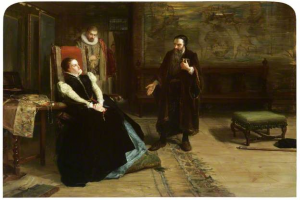 1563 – Mary, Stewart Queen, summoned Knox to Holyrood after hearing that he had been preaching against her proposed marriage to Don Carlos, the son of Philip II of Spain. Mary began by scolding Knox, then she burst into tears. “What have ye to do with my marriage?” she asked, and “What are ye within this commonwealth?” “A subject born within the same, Madam,” Knox replied. He noted that though he was not of noble birth, he had the same duty as any subject to warn of dangers to the realm. When Mary started to cry again, he said, “Madam, in God’s presence I speak: I never delighted in the weeping of any of God’s creatures; yea I can scarcely well abide the tears of my own boys whom my own hand corrects, much less can I rejoice in your Majesty’s weeping.” He added that he would rather endure her tears, however, than remain silent and “betray my Commonwealth”. At this, Mary ordered him out of the room. The Conference between Mary, Queen of Scots and John Knox at Holyrood Palace, 1561 by Robert Inerarity Herdman painted 1875
1563 – Mary, Stewart Queen, summoned Knox to Holyrood after hearing that he had been preaching against her proposed marriage to Don Carlos, the son of Philip II of Spain. Mary began by scolding Knox, then she burst into tears. “What have ye to do with my marriage?” she asked, and “What are ye within this commonwealth?” “A subject born within the same, Madam,” Knox replied. He noted that though he was not of noble birth, he had the same duty as any subject to warn of dangers to the realm. When Mary started to cry again, he said, “Madam, in God’s presence I speak: I never delighted in the weeping of any of God’s creatures; yea I can scarcely well abide the tears of my own boys whom my own hand corrects, much less can I rejoice in your Majesty’s weeping.” He added that he would rather endure her tears, however, than remain silent and “betray my Commonwealth”. At this, Mary ordered him out of the room. The Conference between Mary, Queen of Scots and John Knox at Holyrood Palace, 1561 by Robert Inerarity Herdman painted 1875
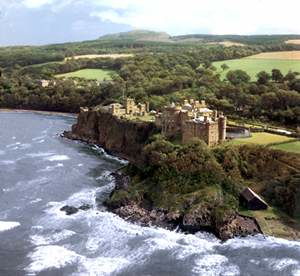 1602 James Bothwell of Auchinleck was one of the prolocutors, or counsel, for John Mure of Auchindrane, when put on his trial for the slaughter of Sir Thomas Kennedy of Culzean, June 24, 1602.
1602 James Bothwell of Auchinleck was one of the prolocutors, or counsel, for John Mure of Auchindrane, when put on his trial for the slaughter of Sir Thomas Kennedy of Culzean, June 24, 1602.
Culzean Castle, Ayrshire Scotland. Between 1777 and 1792 Robert Adam converted an old fortified tower castle for David Kennedy, the 10th Earl of Cassillis, creating at Culzean (pronounced “Cullane“) probably the finest Georgian castle in Scotland. Its Circular Saloon and Oval Staircase are acknowledged as Adam’s final masterpiece. When the Kennedy family donated the castle to the National Trust for Scotland in 1945 they asked that the top floor be given to General Eisenhower as a thank ye from the people of Scotland.
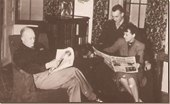 Ike first came to Culzean in 1946 and was clearly touched to accept this gift. He visited the castle three more times, once as President when, for a short while, Culzean was his Scottish White House.
Ike first came to Culzean in 1946 and was clearly touched to accept this gift. He visited the castle three more times, once as President when, for a short while, Culzean was his Scottish White House.
1605 sometime in June. Precursor to First Amendment Freedom of Assembly. Mr. (abbreviation for Minister) John Welch received, with the king’s consent, a letter directed to the several presbyteries, absolutely discharged and prohibited, but without naming any day or place, for any other assembly; and so the series of our assemblies expired, never to revive again in due form, till the covenant was renewed anno 1638. However, many of the godly ministers of Scotland, knowing well, if once the hedge of the government was broken, the corruption of the doctrine would soon follow, resolved not to quit their assemblies so. And therefore a number of them convened at Aberdeen, upon the first tuesday of July 1605, being the last day that was distinctly appointed by authority; and when they had met, did no more but constitute themselves and dissolve. Mr. John Welch approved. Within a month after this meeting [August 1605], many of these godly men were incarcerate, some in one prison, some in another. Mr. [John] Welch was sent first to Edinburgh tolbooth, and then to Blackness; and so from prison to prison, till he was banished to France, never to see Scotland again. After that, he, with many others, who had met at Aberdeen, were brought before the council of Scotland at Edinburgh, to answer for their rebellion and contempt, in holding a general assembly, not authorized by the king. And because they declined the secret council, as judges competent in causes purely spiritual, such as the nature and constitution of a general assembly is, they were first remitted to the prison at Blackness, and other places, and thereafter, six of the most considerable of them, were brought [141 under night from Blackness to Linlithgow before the criminal judges, to answer an accusation of high treason at the instance of Sir Thomas Hamilton the king’s advocate, for declining, as he alleged, the king’s lawful authority, in refusing to admit the council judges competent in the cause of the nature of church judicatories; and, after their accusation and answer was read, by the verdict of a jury of very considerable gentlemen, they were condemned as guilty of high treason, the punishment deferred till the king’s pleasure should be known; and thereafter their punishment was made banishment. Biographia Scoticana: OR, A BRIEF HISTORICAL ACCOUNT OF THE LIVES, CHARACTERS, and MEMORABLE TRANSACTIONS of the most eminent SCOTS WORTHIES, Noblemen, Gentlemen, Ministers, and others: From Mr. Patrick Hamilton, who was born about the year of our Lord 1503, and suffered martyrdom at St. Andrews, Feb. 1527, to Mr. James Renwick, who was executed in the Grass-market of Edinburgh Feb. 17, 1688. together with a succinct Account of the Lives of other seven eminent Divines, and Sir Robert Hamilton of Preston, who died about, or shortly after the Revolution.as also,An Appendix, containing a short historical Hint of the wicked Lives and miserable Deaths of some of the most remarkable apostates and bloody persecutors in Scotland from the Reformation to the Revolution.Collected from historical Records, Biographical Accounts, and other authenticated Writings:—The whole including a Period of near Two Hundred Years. By John Howie – 178181
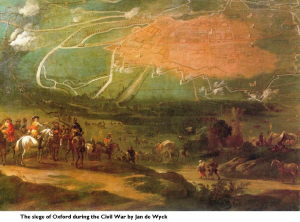 1646 Siege of Oxford ended with the surrender of Royalist garrison.
1646 Siege of Oxford ended with the surrender of Royalist garrison.
The siege of Oxford during the Civil War by Jan de Wyck.
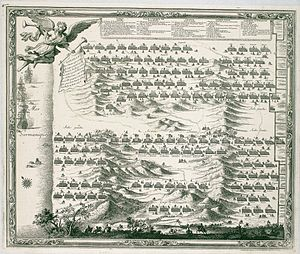 1658 – Fall of Dunkirk. Dunkirk surrendered ten days after the battle of the Dunes on June 14, and Cardinal Mazarin honoured the terms of the treaty with Oliver Cromwell and handed the port over to the Commonwealth . Part of the English contingent was left to garrison Dunkirk and Mardyke under the command of Sir William Lockhart,
1658 – Fall of Dunkirk. Dunkirk surrendered ten days after the battle of the Dunes on June 14, and Cardinal Mazarin honoured the terms of the treaty with Oliver Cromwell and handed the port over to the Commonwealth . Part of the English contingent was left to garrison Dunkirk and Mardyke under the command of Sir William Lockhart,
Battle of the Dunes 1658
- Lockhart of Bar 1297 2Miller 2Simmons 2Choate 2Sorensen
whilst the rest, under Sir Thomas Morgan, continued to serve with Turenne’s army in the field. Morgan’s command consisted of four regiments, viz. his own, and those of Cochrane, Clarke, and Lillingston. They distinguished themselves at the siege of Bergues, where Lieutenant-Colonel Hughes of
Cochrane’s regiment was killed, and still more at the siege of Ypres, according to Morgan’s own story.
1755 Battle of Monongahela River 1755 – Braddock’s Defeat, Fort Duquesne, western Pennsylvania Colony. The French and Indian War also known as the Seven Year War (1757 to 1762). the army crossed the Great Crossing place, encountering a deserted Indian encampment with threatening messages painted on trees.
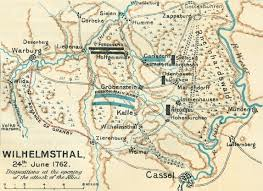 1762 Battle of Wilhelmstahl . Germany Seven Years War. Battle of Wilhelmsthal (also Battle of Wilhelmstadt) British Regiments: 3rd Dragoon Guards; later the 3rd Carabineers and now the Royal Scots Dragoon Guards.
The Carabineers; later the 3rd Carabineers and now the Royal Scots Dragoon Guards. 2nd Dragoons, the Royal Scots Greys; now the Royal Scots Dragoon Guards. 2nd Battalion the Coldstream Guards.
2nd Battalion the Third Guards, now the Scots Guards. 25th Foot; now the King’s Own Scottish Borderers. 87th Highlanders; disbanded after the war.
88th Highlanders; disbanded after the war
1762 Battle of Wilhelmstahl . Germany Seven Years War. Battle of Wilhelmsthal (also Battle of Wilhelmstadt) British Regiments: 3rd Dragoon Guards; later the 3rd Carabineers and now the Royal Scots Dragoon Guards.
The Carabineers; later the 3rd Carabineers and now the Royal Scots Dragoon Guards. 2nd Dragoons, the Royal Scots Greys; now the Royal Scots Dragoon Guards. 2nd Battalion the Coldstream Guards.
2nd Battalion the Third Guards, now the Scots Guards. 25th Foot; now the King’s Own Scottish Borderers. 87th Highlanders; disbanded after the war.
88th Highlanders; disbanded after the war
Map
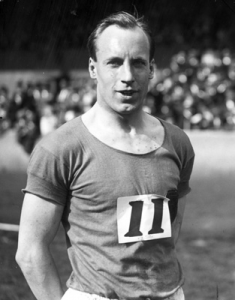 1924 Murray, Feg. “”Did ye Know That Famous Scotch Sprinter Will Not Run In The Olympic 100 Metres Because The Trials Are Run On Sunday”. Los Angeles Times. 24 June 1924. Eric Liddell.
1924 Murray, Feg. “”Did ye Know That Famous Scotch Sprinter Will Not Run In The Olympic 100 Metres Because The Trials Are Run On Sunday”. Los Angeles Times. 24 June 1924. Eric Liddell.
February 22 Eric Liddell Missionary. Liturgyandmusic.wordpress.com
Brother of Jenny Liddell Somerville. Movie Chariots of Fire. 1981 Chariots of Fire Filmed in Scotland tells of two athletes in the 1924 Olympics: Eric Liddell, a devout Scottish Christian who runs for the glory of God, and Harold Abrahams, an English Jew who runs to overcome prejudice.
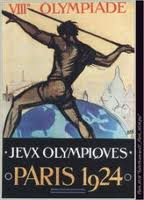 Nigel Havers plays Lord Andrew Lindsay, a Cambridge student runner partially based on David Burghley and Douglas Lowe. Lord Burghley married firstly in 1929, Lady Mary Theresa Montagu Douglas Scott (4 March 1904 – 1 June 1984), fourth daughter of Sir John Montagu Douglas Scott, 7th Duke of Buccleuch & 9th Duke of Queensberry and Lady Margaret Alice “Molly” Bridgeman
Nigel Havers plays Lord Andrew Lindsay, a Cambridge student runner partially based on David Burghley and Douglas Lowe. Lord Burghley married firstly in 1929, Lady Mary Theresa Montagu Douglas Scott (4 March 1904 – 1 June 1984), fourth daughter of Sir John Montagu Douglas Scott, 7th Duke of Buccleuch & 9th Duke of Queensberry and Lady Margaret Alice “Molly” Bridgeman
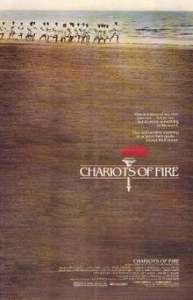 Film Poster. Eric Liddell (Ian Charleson), born in China of Scottish missionary parents, is in Scotland. Liddell delivers a sermon at the Paris Church of Scotland that Sunday, and quotes from Isaiah 40, ending with:
Film Poster. Eric Liddell (Ian Charleson), born in China of Scottish missionary parents, is in Scotland. Liddell delivers a sermon at the Paris Church of Scotland that Sunday, and quotes from Isaiah 40, ending with:
But they that wait upon the Lord shall renew their strength; they shall mount up with wings as eagles; they shall run, and not be weary; and they shall walk, and not faint.
Liddell defeats the American favourites and wins the gold medal. Ian Charleson himself wrote Eric Liddell’s speech to the post-race workingmen’s crowd at the Scotland v. Ireland races.
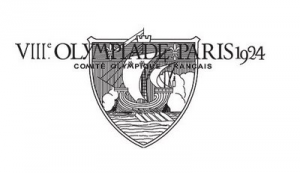 Eric Liddell went on to missionary work in China. All of Scotland mourned his death in 1945 in Japanese-occupied China.
Eric Liddell went on to missionary work in China. All of Scotland mourned his death in 1945 in Japanese-occupied China.
VIII Olympiad Paris 1924 Comite Olympique Francais
 In the film, Eric Liddell is tripped up by a Frenchman in the 400 metre event of a Scotland–France international athletic meeting. Liddell recovers, makes up a 20 metre deficit, and wins. This was based on fact; the actual race was during a Triangular Contest meet between Scotland, England, and Ireland at Stoke-on-Trent in England in July 1923.
In the film, Eric Liddell is tripped up by a Frenchman in the 400 metre event of a Scotland–France international athletic meeting. Liddell recovers, makes up a 20 metre deficit, and wins. This was based on fact; the actual race was during a Triangular Contest meet between Scotland, England, and Ireland at Stoke-on-Trent in England in July 1923.
 Liddell’s sister, Jenny Liddell Somerville cooperated fully with the making of the film and has a brief cameo in the Paris Church of Scotland during Liddell’s sermon. Some pieces of Vangelis’s music in the film did not end up on the film’s soundtrack album. One of them is the background music to the race Eric Liddell runs in the Scottish highlands. Scottish stage actor Ian Charleson performed the role of Pierre in the Royal Shakespeare Company’s production of Piaf,
Liddell’s sister, Jenny Liddell Somerville cooperated fully with the making of the film and has a brief cameo in the Paris Church of Scotland during Liddell’s sermon. Some pieces of Vangelis’s music in the film did not end up on the film’s soundtrack album. One of them is the background music to the race Eric Liddell runs in the Scottish highlands. Scottish stage actor Ian Charleson performed the role of Pierre in the Royal Shakespeare Company’s production of Piaf,
 Liddell was memorialized by Elder Clinton Cook at the 2012 semi annual general conference October 4, 1st session, of the Church of Jesus Christ of Latter Day Saints, as Liddell
Liddell was memorialized by Elder Clinton Cook at the 2012 semi annual general conference October 4, 1st session, of the Church of Jesus Christ of Latter Day Saints, as Liddell  was an inspiration to Apostle Cook’s son not to participate in sports on Sundays. Elder Cook quoted Liddell quoting Isaiah.
was an inspiration to Apostle Cook’s son not to participate in sports on Sundays. Elder Cook quoted Liddell quoting Isaiah.
1943 Stage Door Canteen movie released, Musical, includes Auld Lang Syne, [lyrics by Robert Burns – if I have to explain who he is by now, wait until January Scots book of days] as  the Scots connection. War escape entertainment Art immitating life, for the real New York City Stage door Canteen, a recreation center which had Hostesses and celebrities dancing with soldiiers waiting to go to the Atlantic, Africa, and Europe staging invasions. 50 celebrities, including Scots Judith Anderson [Frances Margaret Anderson 1897-1992, from Australia and mentored by Julius Knight, Scottish actor – nominatee Oscar], Tallulah Brockman Bankhead (3rd great grandfather Ulster Scots), Ralph Rexford Bellamy (Canadian 1994-1991), Jack Benny (wife Mary Livingstone 1927-1974 a rebranded Scottish stage name for Sadye Marks), Edgar Bergen 1903-1978, Swedish ventriloquist for character Charlie McCarthy (clan land WOOD and water) with still from Stage Door Canteen Wikipedia,
the Scots connection. War escape entertainment Art immitating life, for the real New York City Stage door Canteen, a recreation center which had Hostesses and celebrities dancing with soldiiers waiting to go to the Atlantic, Africa, and Europe staging invasions. 50 celebrities, including Scots Judith Anderson [Frances Margaret Anderson 1897-1992, from Australia and mentored by Julius Knight, Scottish actor – nominatee Oscar], Tallulah Brockman Bankhead (3rd great grandfather Ulster Scots), Ralph Rexford Bellamy (Canadian 1994-1991), Jack Benny (wife Mary Livingstone 1927-1974 a rebranded Scottish stage name for Sadye Marks), Edgar Bergen 1903-1978, Swedish ventriloquist for character Charlie McCarthy (clan land WOOD and water) with still from Stage Door Canteen Wikipedia,
 Ray Bolger stage name of Raymond WALLACE Bulcao (1904-1987) his mother Anne was clan Wallace; Helen Broderick 1891-1959 (married to Lester Crawford – clan Lindsay Crawford, and mother of actor Broderick Crawford); Ira Claire 1893-1985 married to William R. Wallace (clan Wallace); Katharine Cornell who acted in a 1928 play about an event from Glasgow Scotland and married to Guthrie McClintic; Helen Hayes [MacArthur] (nee Brown 1900-1993) First Lady of American Theatre;
Ray Bolger stage name of Raymond WALLACE Bulcao (1904-1987) his mother Anne was clan Wallace; Helen Broderick 1891-1959 (married to Lester Crawford – clan Lindsay Crawford, and mother of actor Broderick Crawford); Ira Claire 1893-1985 married to William R. Wallace (clan Wallace); Katharine Cornell who acted in a 1928 play about an event from Glasgow Scotland and married to Guthrie McClintic; Helen Hayes [MacArthur] (nee Brown 1900-1993) First Lady of American Theatre;
 Katharine Houghton Hepburn 1907-2003 clan Hepburn, previously playing Mary Stuart in Mary of Scotland and nominee for 12 oscars winning 4;
Katharine Houghton Hepburn 1907-2003 clan Hepburn, previously playing Mary Stuart in Mary of Scotland and nominee for 12 oscars winning 4;
Sam Jaffe 1891-1984, whose wife was Bettye Louise Ackerman; Otto Kruger 1885-1974 married to Susan MacManamy; Gertrude Lawrence 1898-1952 married Francis Gordon-Howley (clan Gordon); Gypsy Rose Lee 1911-1970 married Alexander Kirkland (Scots); Alfred Lunt of Scottis Descent and Lynn Fontaine (1887-1983) Alfred’s wife; Aline MacMahon (scots) 1899-1991, nominee Oscar; Harpo Marx stage name of Arthur Marx 1888-1964, married Susan Fleming (clan Fleming); Elsa Maxwell 1883-1963 (clan Maxwell); He Meinken 1901-1966 previously played Elizabeth (1st ) Mary Queen of Scots movie; Ethel Merman Scots ancestry; Alan Mobray (1896-1969) who previously appeared in Mary Queen of Scots; Lanny Ross 1906-1988; (Ross and Scott clans) Martha Scott 1912-2003 Scott and McKinley; Cornelia Otis Skinnner 1899-1979 theatre play covered in Scotland; Johnny Weissmuller married Beryl Scott, attended the British Commonwealth Games in Edinburgh;
 Ed Wynn 1886-1966 married Dorothy Elizabeth Nesbitt (scots);
Ed Wynn 1886-1966 married Dorothy Elizabeth Nesbitt (scots);
Peggy Lee 1920-2002 married to Dewey Martin; Freddy Martin 1906-1983.
2016 Brexit (Britain Exit from European Union referendum). Scott Glasgow, Stirling, South Ayrshire, Anglesey and Angus all voted to remain in the European Union. Broadly speaking, so far this evening (23 June Rocky Mountains), England is voting to leave the EU while Scotland is voting to remain.
2016, Hi I’m Emma – People. I was born and raised in Scotland. I am a recent convert. I am studying at University. I’m a Mormon.
Born in Ayrshire, Scotland and currently studying History and English at University. I have been a member of the church since 24th June 2016 and I am loving learning more and more, https://www.mormon.org/searchresults#?query=scotland&filter=site
Disclaimer: The author of each article published on this web site owns his or her own words. The opinions, beliefs and viewpoints expressed by the various authors and forum participants on this site do not necessarily reflect the opinions, beliefs and viewpoints of Utah Standard News or official policies of the USN and may actually reflect positions that USN actively opposes. No claim in public domain or fair use. © John Choate
Utah Standard News depends on the support of readers like you.
Good Journalism requires time, expertise, passion and money. We know you appreciate the coverage here. Please help us to continue as an alternative news website by becoming a subscriber or making a donation. To learn more about our subscription options or make a donation, click here.
To Advertise on UtahStandardNews.com, please contact us at: ed@utahstandardnews.com.


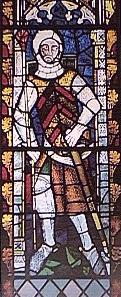
Comments - No Responses to “June 24th Scots Book of Days”
Sure is empty down here...